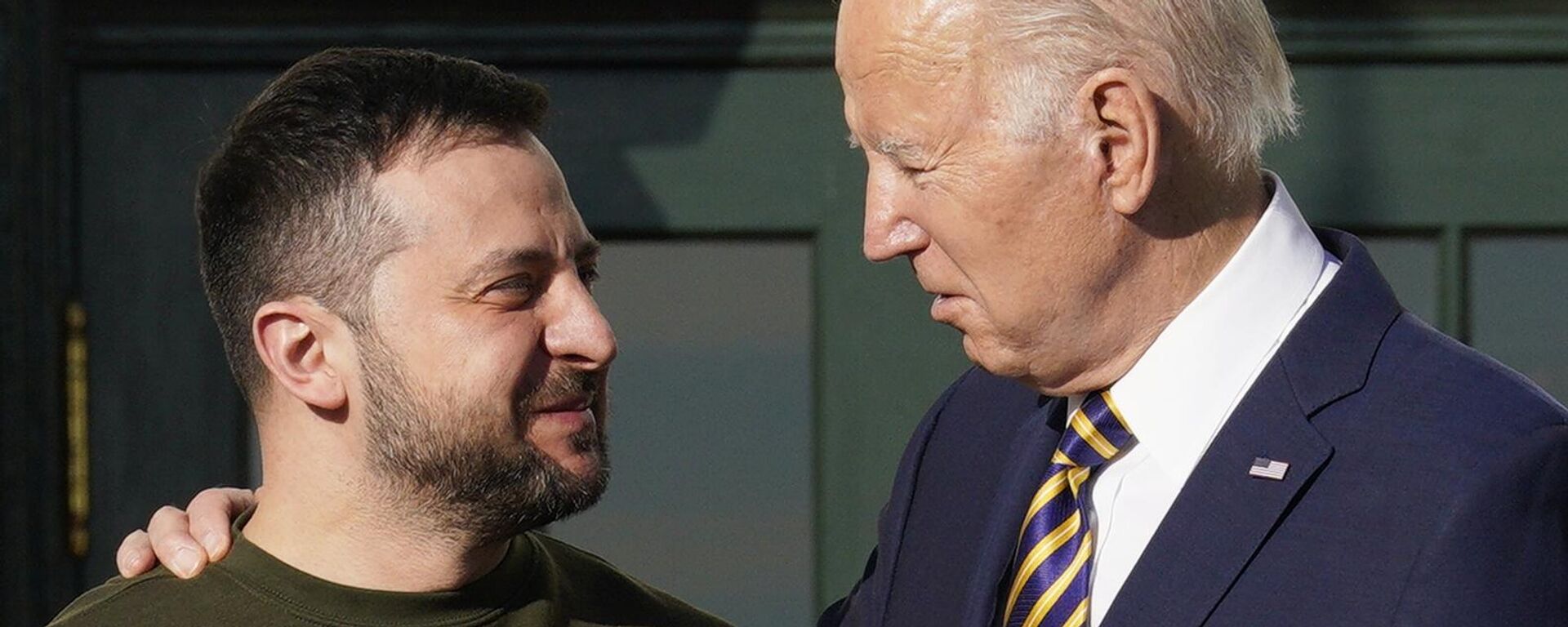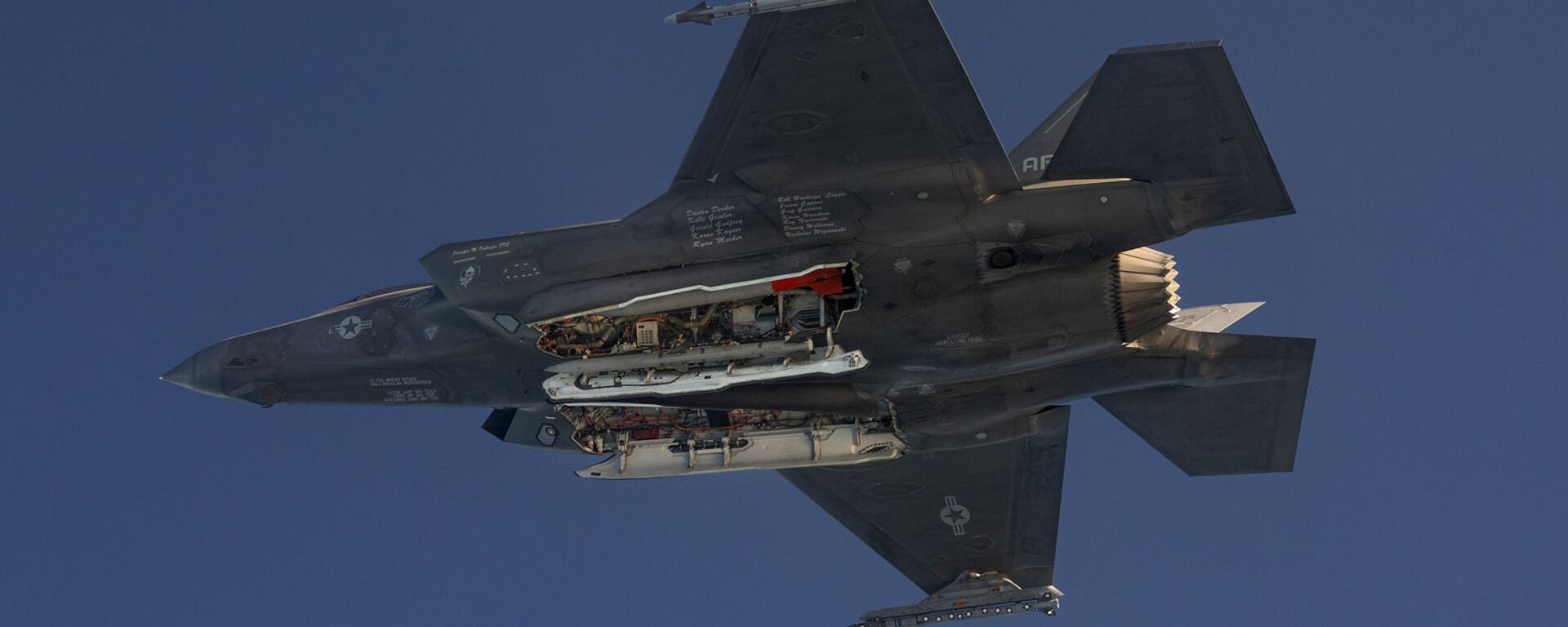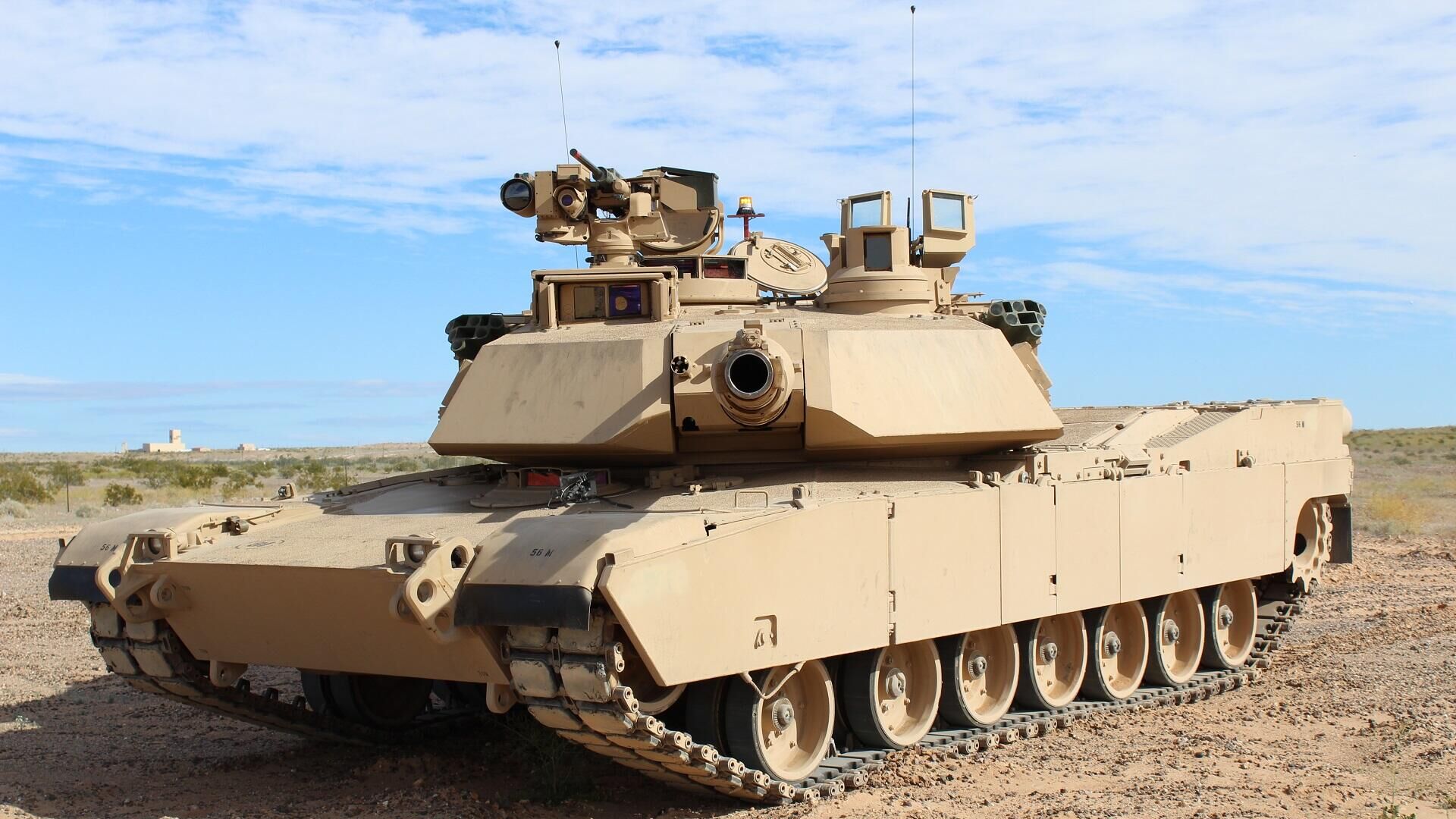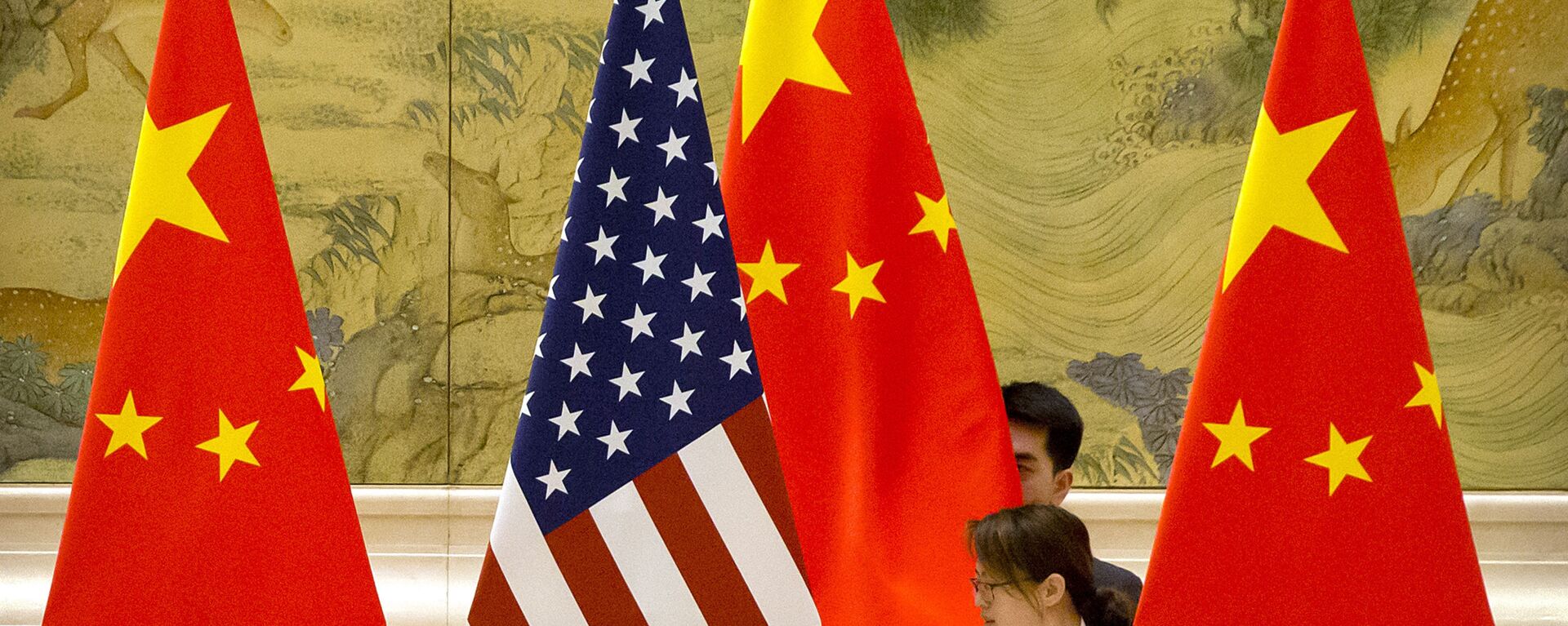https://sputnikglobe.com/20231209/pork-pay-raises--shiny-new-toys-defense-authorization-act-keeps-war-machine-churning-1115491827.html
Pork, Pay Raises & Shiny New Toys: Defense Authorization Act Keeps War Machine Churning
Pork, Pay Raises & Shiny New Toys: Defense Authorization Act Keeps War Machine Churning
Sputnik International
The annual National Defense Authorization Act mandates billions of dollars towards bases, weapons systems, and service member pay, but a controversy over the new Space Force headquarters remains unresolved.
2023-12-09T04:13+0000
2023-12-09T04:13+0000
2023-12-09T05:03+0000
analysis
military & intelligence
us
national defense authorization act (ndaa)
us army
us military
pentagon
white house
us department of defense (dod)
space force
https://cdn1.img.sputnikglobe.com/img/07e7/0a/03/1113890050_0:0:1920:1080_1920x0_80_0_0_672d8706c0bdecfd8621cb22c1756d48.jpg
Even in our era of polarization and the ever-present threat of government shutdown, US military spending remains a key priority of bipartisan compromise each year. The latest consummation of these efforts emerged late Wednesday night when lawmakers in the House and Senate released a draft National Defense Authorization Act (NDAA) for 2024.The 3,093-page bill is set to increase US military spending to $886 billion, a 3% increase from the previous year.In addition to mandating spending on weapons and other equipment, the NDAA is an important statement of defense and security policy for the year to come. Here, Sputnik breaks down the revelations contained within and their implications for US foreign policy.Familiar FoesUS tensions with various foreign powers have crystallized in recent years with Israel’s campaign in Gaza and Russia’s special military operation in Ukraine. “Our nation faces unprecedented threats from China, Iran, Russia, and North Korea,” reads a joint statement from the House and Senate Armed Services Committee.Although the country hasn’t gone to war in some 40 years, China’s economic rise remains a primary concern for US policymakers, something that’s reflected in defense policy. The US continues to build its presence in the Pacific, with this year’s NDAA authorizing the transfer of three “Virginia-class” nuclear submarines to Australia.The move represents a significant acceleration of timetables as previously the subs were not scheduled to be sent to the country until 2032. Australia has concurrently agreed to provide $3 billion to invest in US shipyards, at the behest of Sen. Roger Wicker (R-MS).The bill also mandates significant investments in bases and fueling facilities in Japan. Meanwhile, the act enforces a prohibition on contracting with entities that operate within the Russian energy sector. Subsections offer insights on military cooperation between Russia and China in the Arctic and “Iran-Russia nuclear-related cooperation.”28,500 US troops will remain stationed in South Korea while the two countries will deepen “nuclear deterrence coordination” aimed at the North Korea (DPRK). The United States killed some 20% of the North Korean population in the Korean War in the 1950s.Human ResourcesThe United States is in the midst of a major recruiting crisis, consistently failing to achieve annual enlistment targets. The military plans to address that by enacting a 5.2% pay raise, reportedly the largest in more than two decades. The pay hike will see entry-level service members paid about $1,100 more per year.The NDAA also mandates monthly bonuses to be dispersed to junior members at the discretion of service secretaries.House Republicans have attempted to boost service member pay to ensure no member of the US military makes below the equivalent of $15 per hour, although the White House has stated their opposition to the measure until comprehensive reviews of the matter are completed.Several bullet points within draft NDAA proposals relate to improving conditions in military barracks. The bill mandates the replacement of “substandard” barracks over the next five years and mandates a uniform standard between both government and privately-run housing. Finally, the bill establishes “civilian oversight” of housing for enlisted members to improve conditions.A Government Accountability Office report earlier this year that demonstrated deplorable conditions in many barracks generated significant embarrassment for the US military.Finally, Congress is seeking to mandate a review and possible reinstatement of service members who left the armed forces over the COVID-19 vaccine mandate. It’s estimated that more than 7,000 troops left the Army, Navy, and Marines over the issue.Planes, Tanks, and WeaponsCongress repeatedly allocates funds over and above what the Pentagon requests for various weapons systems. The practice boosts local economies by keeping weapons plants humming in House districts throughout the country, a phenomenon known as military Keynesianism. It also keeps military contractors happy, although some have questioned whether the largesse contributes towards an optimally-functioning military.$1.2 billion is dedicated towards upgrading the M1 Abrams tank fleet over the next year, almost double the $698 million the Pentagon requested. Extra funds are also allocated to continue the development of next-generation M1E3 Abrams technology, although it will not be completed for 2024.$674 million is allocated towards procurement of the Self-Propelled Howitzer Paladin Integrated Management (PIM) program, $205 million more than the original request. Meanwhile, $380 million is set aside for the purchasing of CH-47 Chinook helicopter, more than $177 more than was requested. The development of the new CH–47F Block II remains ongoing, with $41 million allocated for research of the technology.Meanwhile, controversy continues over the planned headquarters for the new Space Force branch first announced by former President Donald Trump. Trump wanted the headquarters built in Huntsville, Alabama, a decidedly more Republican-leaning locale than the Colorado Springs, Colorado location preferred by Biden. Funding has been blocked until the Department of Defense’s Inspector General completes an investigation of the matter.At the same time, the Space Development Agency is investing in low Earth orbit satellite constellations for missile tracking and data transport. $317 million is allocated towards the building of six Terminal High Altitude Area Defense (THAAD) interceptors, while several studies are mandated to investigate the use of artificial intelligence (AI) technology to improve various operations within the military.
https://sputnikglobe.com/20230311/swift--severe-costs-us-lawmakers-push-sanctions-mechanism-to-deter-china-from-russia-support-1108287776.html
https://sputnikglobe.com/20230927/us-house-advances-amendment-to-slash-defense-secretary-austins-salary-1113743726.html
https://sputnikglobe.com/20230924/us-soldiers-treated-worse-than-garbage-while-white-house-keeps-throwing-money-at-ukraine-1113636879.html
https://sputnikglobe.com/20230922/almost-half-of-us-fleet-of-f-35s-not-capable-of-flying-at-any-time---watchdog-1113572686.html
russia
china
iran
Sputnik International
feedback@sputniknews.com
+74956456601
MIA „Rossiya Segodnya“
2023
Sputnik International
feedback@sputniknews.com
+74956456601
MIA „Rossiya Segodnya“
News
en_EN
Sputnik International
feedback@sputniknews.com
+74956456601
MIA „Rossiya Segodnya“
Sputnik International
feedback@sputniknews.com
+74956456601
MIA „Rossiya Segodnya“
military & intelligence, us, national defense authorization act (ndaa), us army, us military, pentagon, white house, us department of defense (dod), space force, russia, china, iran
military & intelligence, us, national defense authorization act (ndaa), us army, us military, pentagon, white house, us department of defense (dod), space force, russia, china, iran
Pork, Pay Raises & Shiny New Toys: Defense Authorization Act Keeps War Machine Churning
04:13 GMT 09.12.2023 (Updated: 05:03 GMT 09.12.2023) The annual National Defense Authorization Act mandates billions of dollars towards bases, weapons systems, and service member pay, but a controversy over the new Space Force headquarters remains unresolved.
Even in our era of polarization and the ever-present threat of government shutdown, US military spending remains a key priority of bipartisan compromise each year. The latest consummation of these efforts emerged late Wednesday night when lawmakers in the House and Senate released a draft National Defense Authorization Act (NDAA) for 2024.
The
3,093-page bill is set to
increase US military spending to $886 billion, a 3% increase from the previous year.
In addition to mandating spending on weapons and other equipment, the NDAA is an important statement of defense and security policy for the year to come. Here, Sputnik breaks down the revelations contained within and their implications for US foreign policy.
US tensions with various foreign powers have crystallized in recent years with
Israel’s campaign in Gaza and Russia’s special military operation in Ukraine. “Our nation faces unprecedented threats from China, Iran, Russia, and North Korea,” reads a
joint statement from the House and Senate Armed Services Committee.
Although the country hasn’t gone to war in some 40 years, China’s economic rise remains a primary concern for US policymakers, something that’s reflected in defense policy. The US continues to build its presence in the Pacific, with this year’s NDAA
authorizing the transfer of three “Virginia-class” nuclear submarines to Australia.
The move represents a significant acceleration of timetables as previously the subs were not scheduled to be sent to the country until 2032. Australia has concurrently agreed to provide $3 billion to invest in US shipyards, at the behest of Sen. Roger Wicker (R-MS).
The bill also mandates significant investments in bases and fueling facilities in Japan. Meanwhile, the act enforces a prohibition on contracting with entities that operate within the Russian energy sector. Subsections offer insights on military cooperation between Russia and China in the Arctic and “Iran-Russia nuclear-related cooperation.”
28,500 US troops will remain stationed in South Korea while the two countries will deepen “nuclear deterrence coordination” aimed at the North Korea (DPRK). The United States
killed some 20% of the North Korean population in the Korean War in the 1950s.
The United States is in the midst of
a major recruiting crisis, consistently failing to achieve annual enlistment targets. The military plans to address that by enacting a 5.2% pay raise,
reportedly the largest in more than two decades. The pay hike will see entry-level service members paid about $1,100 more per year.
The NDAA also mandates monthly bonuses to be dispersed to junior members at the discretion of service secretaries.

27 September 2023, 17:54 GMT
House Republicans have attempted to boost service member pay to ensure no member of the US military makes below the equivalent of $15 per hour, although the White House has
stated their opposition to the measure until comprehensive reviews of the matter are completed.
Several bullet points within
draft NDAA proposals relate to improving conditions in military barracks. The bill mandates the replacement of “substandard” barracks over the next five years and mandates a uniform standard between both government and privately-run housing. Finally, the bill establishes “civilian oversight” of housing for enlisted members to improve conditions.
A Government Accountability Office
report earlier this year that demonstrated deplorable conditions in many barracks generated significant embarrassment for the US military.

24 September 2023, 18:56 GMT
Finally, Congress is seeking to mandate a
review and possible reinstatement of service members who left the armed forces over the COVID-19 vaccine mandate. It’s estimated that more than 7,000 troops left the Army, Navy, and Marines over the issue.
Planes, Tanks, and Weapons
Congress repeatedly allocates funds over and above what the Pentagon requests for various weapons systems. The practice boosts local economies by keeping weapons plants humming in House districts throughout the country, a phenomenon known as military Keynesianism. It also keeps military contractors happy, although some have questioned whether the largesse contributes towards an optimally-functioning military.
$1.2 billion is
dedicated towards upgrading the M1 Abrams tank fleet over the next year, almost double the $698 million the Pentagon requested. Extra funds are also allocated to continue the development of next-generation M1E3 Abrams technology, although it will not be completed for 2024.
$674 million is allocated towards procurement of the Self-Propelled Howitzer Paladin Integrated Management (PIM) program, $205 million more than the original request. Meanwhile, $380 million is set aside for the purchasing of CH-47 Chinook helicopter, more than $177 more than was requested. The development of the new CH–47F Block II remains ongoing, with $41 million allocated for research of the technology.
Meanwhile, controversy continues over the planned headquarters for the new Space Force branch first announced by
former President Donald Trump. Trump wanted the headquarters built in Huntsville, Alabama, a decidedly more Republican-leaning locale than the Colorado Springs, Colorado location preferred by
Biden. Funding has been blocked until the Department of Defense’s Inspector General completes an investigation of the matter.

22 September 2023, 01:10 GMT
At the same time, the Space Development Agency is investing in low Earth orbit satellite constellations for missile tracking and data transport. $317 million is allocated towards the building of six Terminal High Altitude Area Defense (
THAAD) interceptors, while several studies are mandated to investigate the use of artificial intelligence (AI) technology to improve various operations within the military.






